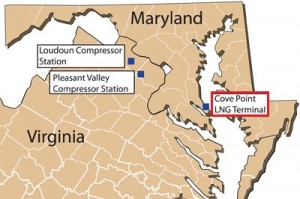Natural Gas Awakening From U.S. Shale Slumber as LNG Shipments come On-Line
From an Article by Naureen Malik and Christine Buurma, Bloomberg News Service, July 30, 2015
After years of languishing in a shale-induced coma, the U.S. natural gas market is waking up.
Seasonal price swings will intensify as the country begins shipping liquefied natural gas cargoes to Asia and Europe later this year, said Bank of America Corp., RBC Capital Markets LLC and Wood Mackenzie Ltd. While that’s good news for traders yearning for volatility, it could be bad news for consumers.
Exports will help prices rebound from the slump caused by the U.S. pumping record amounts from shale formations. Growing domestic winter demand is already causing spikes and trading volumes in futures markets have rebounded to the highest level in three years. Average retail gas prices also will rise with LNG exports, according to Bloomberg New Energy Finance.
“Connecting U.S. natural gas prices into the global market could result in wider spreads at home,” said Francisco Blanch, the head of commodities research at Bank of America Corp. in New York. “Global LNG spot prices are notoriously seasonal.”
Cheniere Energy Inc. will start operating a liquefied natural gas terminal this year in Louisiana, the first new export site in 46 years. The U.S. will be the third-largest supplier by 2020, the International Energy Agency says.
In a sign of what may be coming, futures for January 2017 are already trading at a 35.7-cent premium to October 2016 contracts, the biggest premium for this time of the year since 2012. That seasonal spread may widen to as much as a dollar as LNG exports expand, Blanch said.
Price Volatility
Natural gas for September delivery fell 0.5 percent to $2.849 per million British thermal units in electronic trading on the New York Mercantile Exchange at 9:29 a.m. London time.
Demand growth, including LNG exports, will lead to greater seasonal price volatility, said Breanne Dougherty, a natural gas analyst at Societe General SA in New York.
Prices have fallen 79 percent in the past seven years as new wells opened in the Marcellus shale deposit across Pennsylvania, Ohio and West Virginia.
Cheniere won approval to export as much as 3.5 billion cubic feet of gas a day from its Sabine terminal, with the first of six liquefaction plants starting by the end of this year and the rest staggered through 2018.
Sempra Energy, Freeport LNG Development LP, Energy Transfer and Dominion Resources Inc. will bring 5.67 billion cubic feet of capacity online from late 2017 through 2019.
LNG shipments might remove enough supply from the market that volatility will rise during particularly cold winters, according to Michael Mitton, the director of the commodity investor team at BNP Paribas SA in New York.
Capture Profits
A rebound in volatility, which makes it easier for traders to capture profits from price swings, has already boosted trading. Futures volume in June rose to 7.71 million contracts, the most for the month since 2012.
New York residents experienced how volatility and price spikes in the cold months can directly affect their costs. More than half of U.S. homes rely on gas for heating.
Consolidated Edison Inc., which owns New York City’s utility, said home gas bills jumped 17 percent in February 2014 from a year earlier because of higher wholesale gas prices during a storm that dumped snow across the East Coast. Spot prices rose to a record on Jan. 21, 2014, as pipeline bottlenecks limited deliveries and demand reached a record.
LNG export terminals in the U.S. will be taking as much as 8.5 billion cubic feet a day out of the domestic gas market by the end of 2019, said Charles Blanchard, a Bloomberg New Energy Finance analyst in New York. Producers will have to drill wells in costlier areas, raising prices by about 35 cents and increasing retail prices by 5 to 10 percent, he said.
“Always and ever, more demand leads to higher prices,” Blanchard said. “The question of whether LNG exports will lead to higher U.S. gas prices is a fairly easy one to answer.”
>>>>>>>>>>>>>
.
See also the VIDEO by Doug Hornig on the Atlantic Coast Pipeline project.

